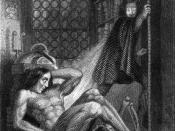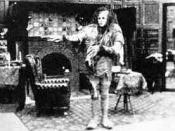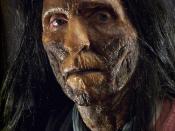Underneath it AllDoes a physical exterior identify a person? In todayÃÂs society people are inclinedto define a person based on his outer appearance rather than the traits that make up theirpersonality and who they really are mentally. Mary ShelleyÃÂs ÃÂFrankensteinÃÂ is anexcellent story that shows how society often punishes people who donÃÂt fit into our ideaof beauty. In this essay I will show how the monster who is rejected by society is putinto a stereotype which leads him to self-hatred and ultimately revenge against his creatorVictor Frankenstein.
Victor is planning his creation and expects his final outcome to be his idea ofattractive. ÃÂI had desired it with an ardour that far exceeded moderation; but now that Ihad finished, the beauty of the dream vanished, and breathless horror and disgust filledmy heartÃÂ(Shelley34). He is surprised that his creation in fact turns out to be hideous andtries to disappear from it.
He essentially regrets making it. The creature is now called amonster. When we think of a monster usually it would be a repugnant, ugly, scarylooking individual. I think the monster is rejected as soon as he is ÃÂbornÃÂ. Victor does notgive him a chance to speak before he turns away with antipathy. His impression is basedsolely on appearance. The monster can be compared to a newborn. He is innocent andknows nothing of the outside world. He has no evil thoughts as of yet. There is nothing tojudge him by or draw conclusions. If the general public does not consider physicalappearance so important, then the monster would have a possibility to be received. Themonster can have a good heart and be willing to help others. But, how can the villagersknow if they never give him a chance. There also may be a chance that the monster canlive in peace with...


